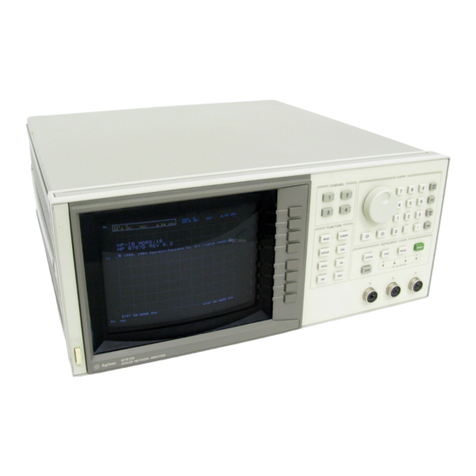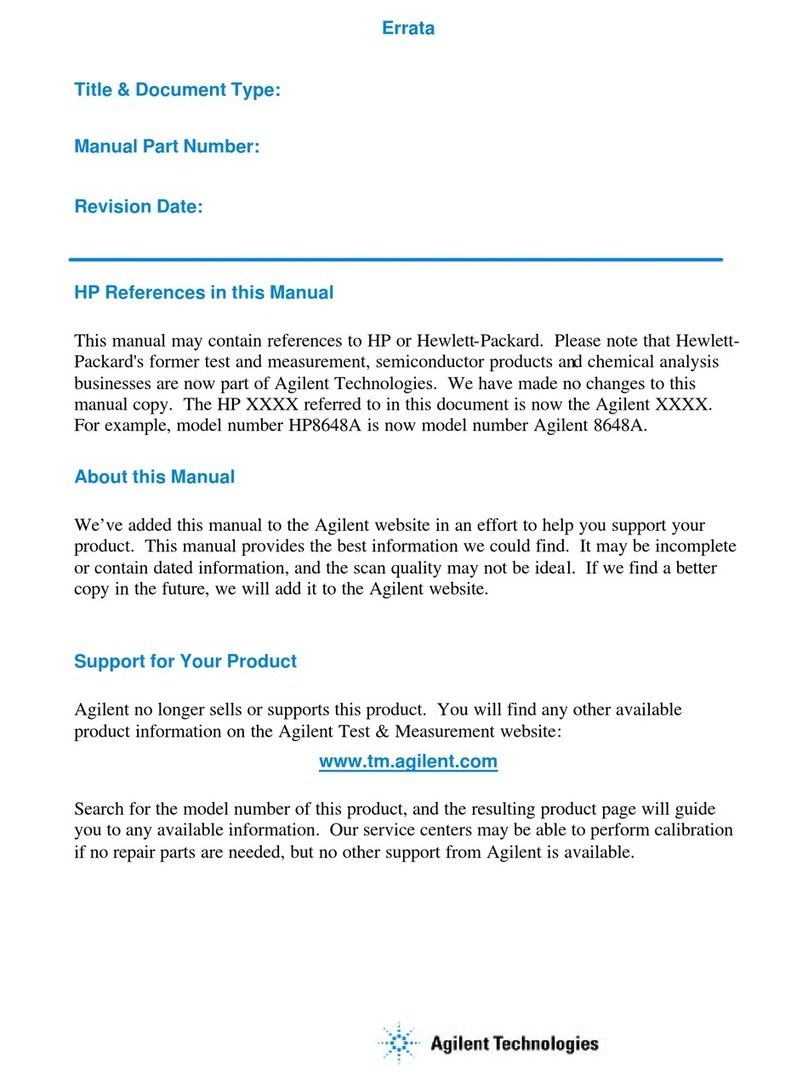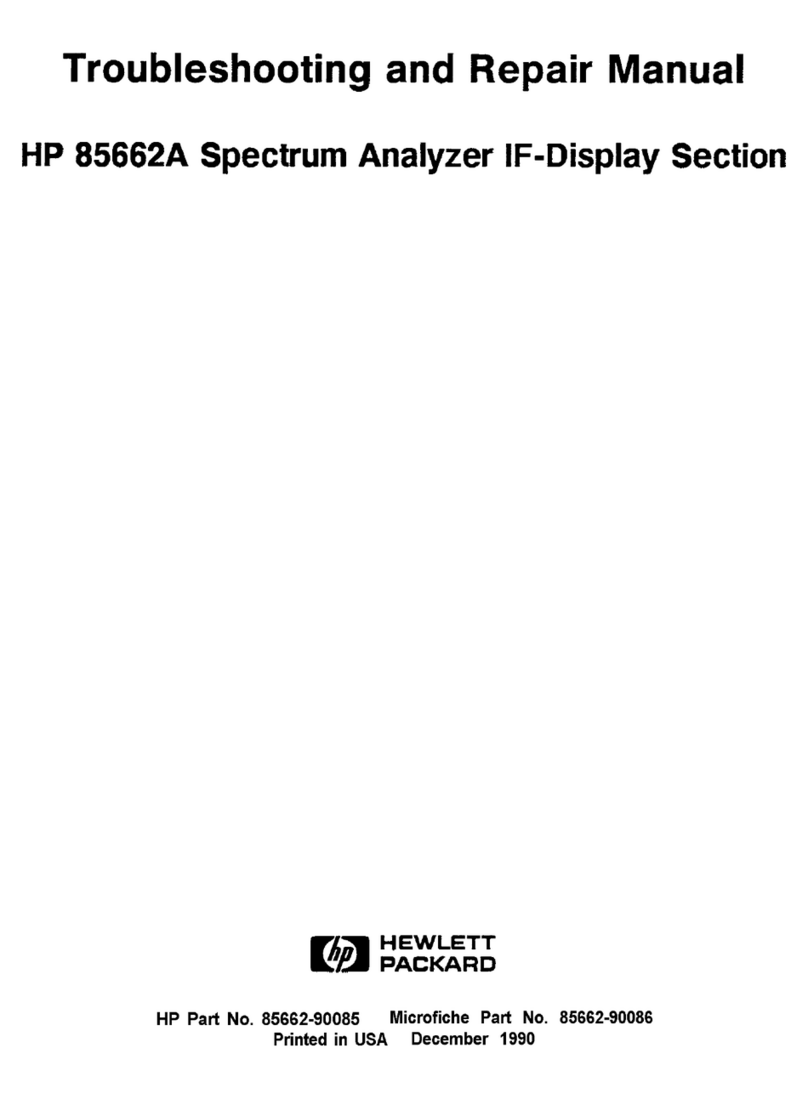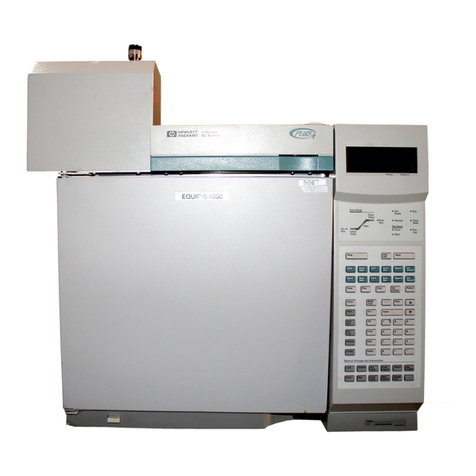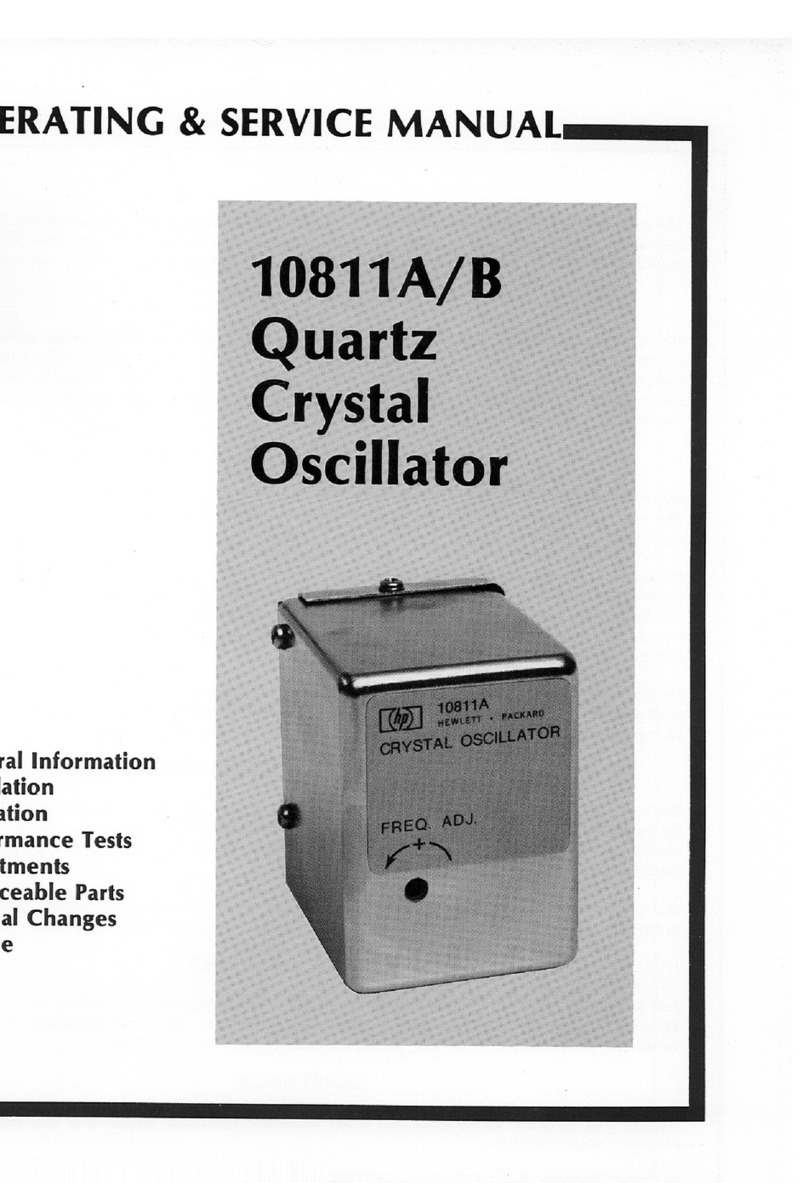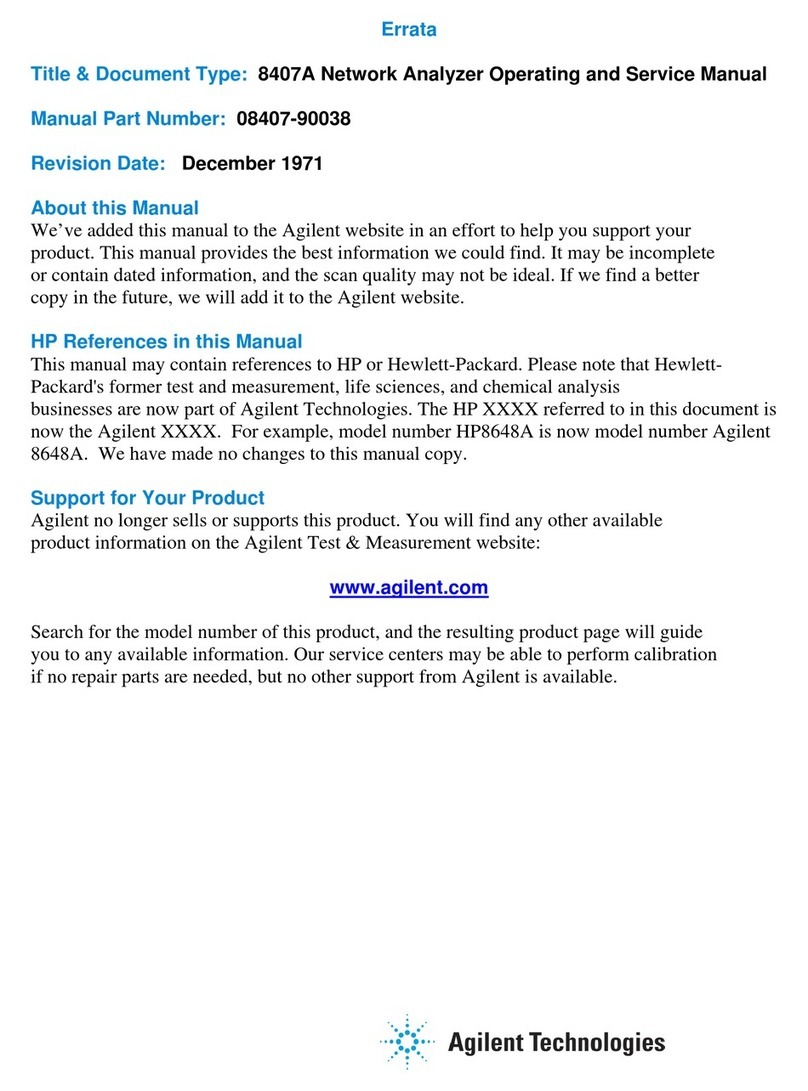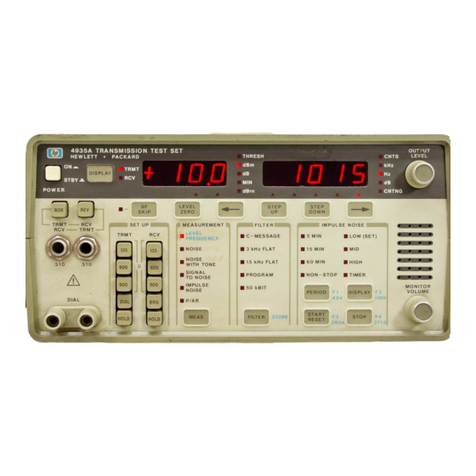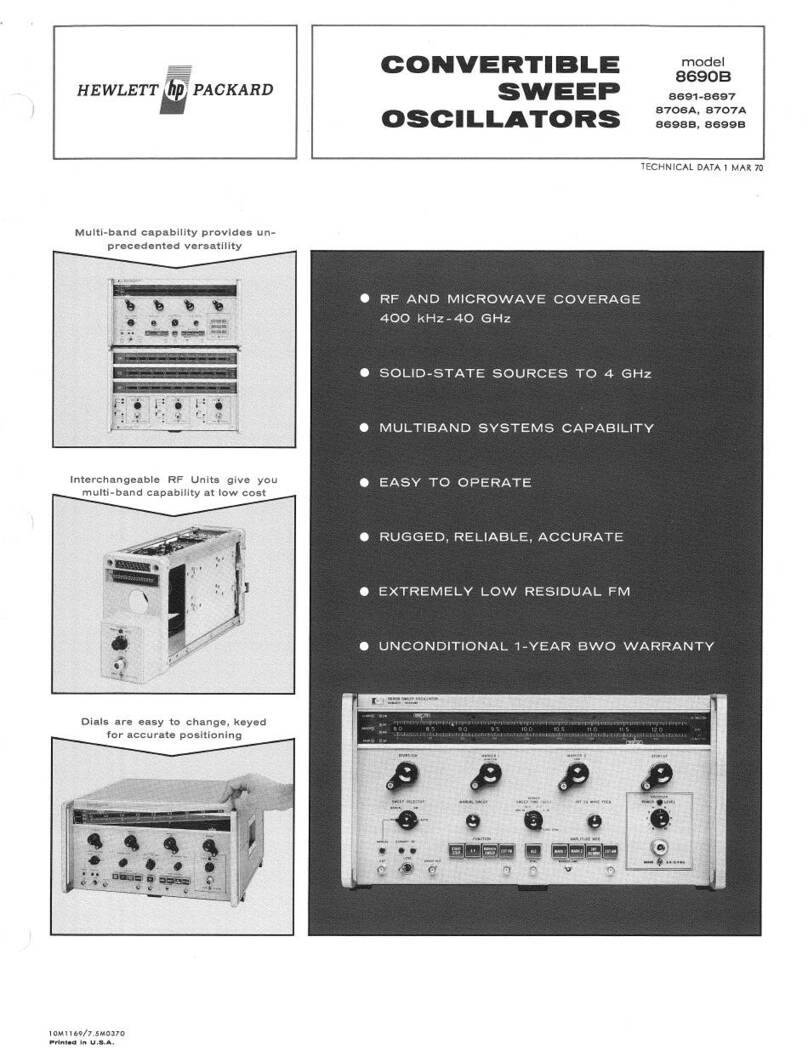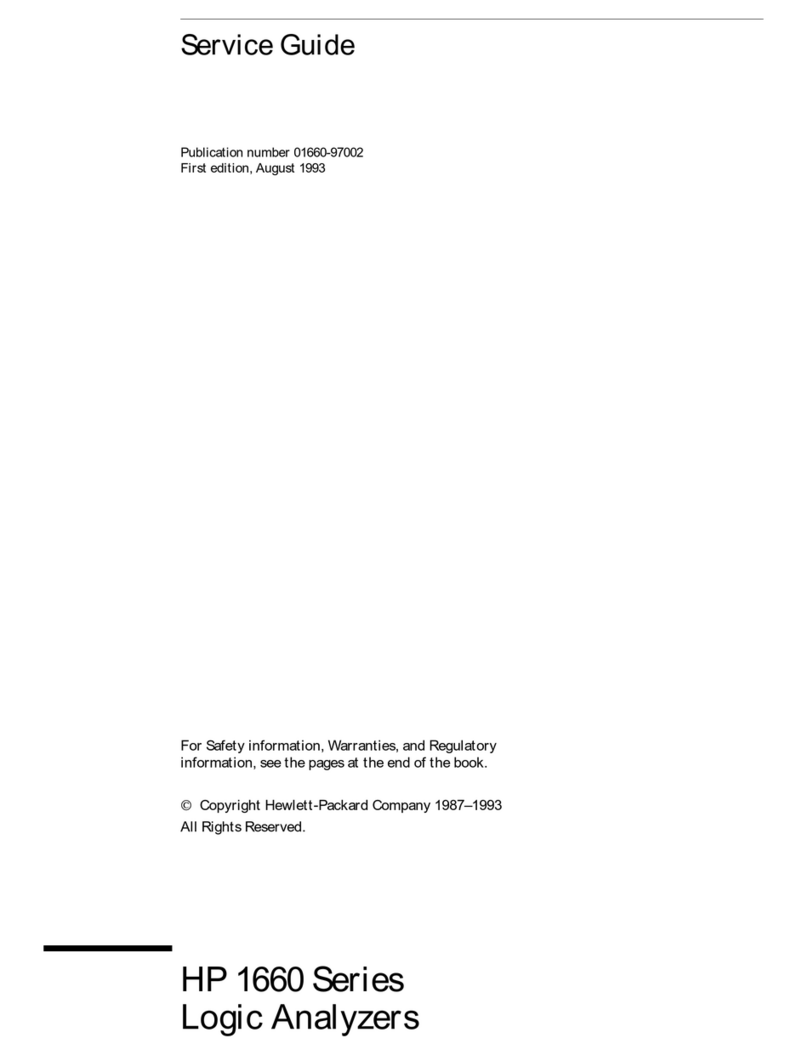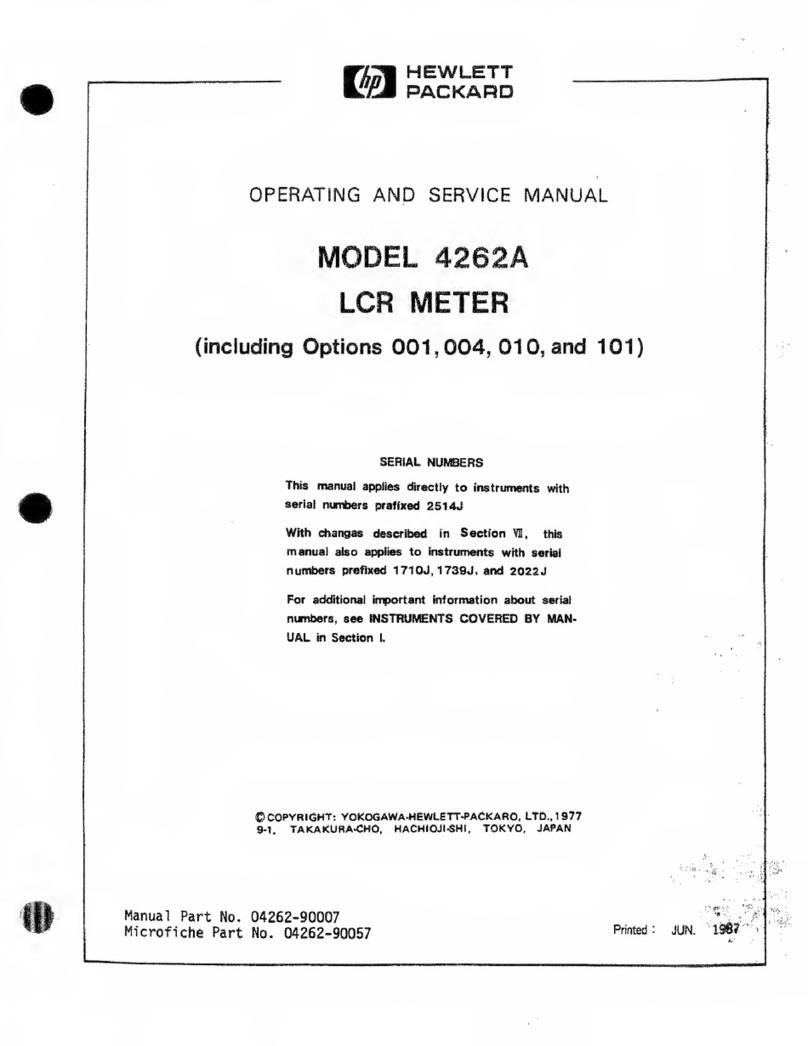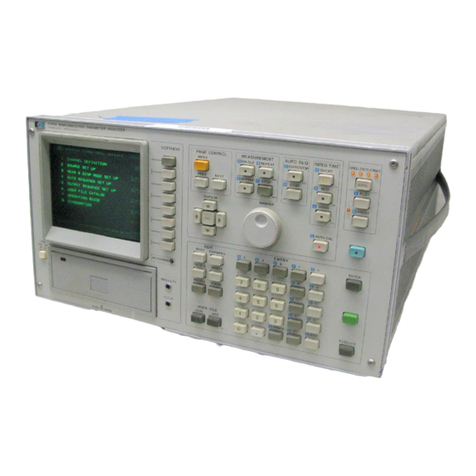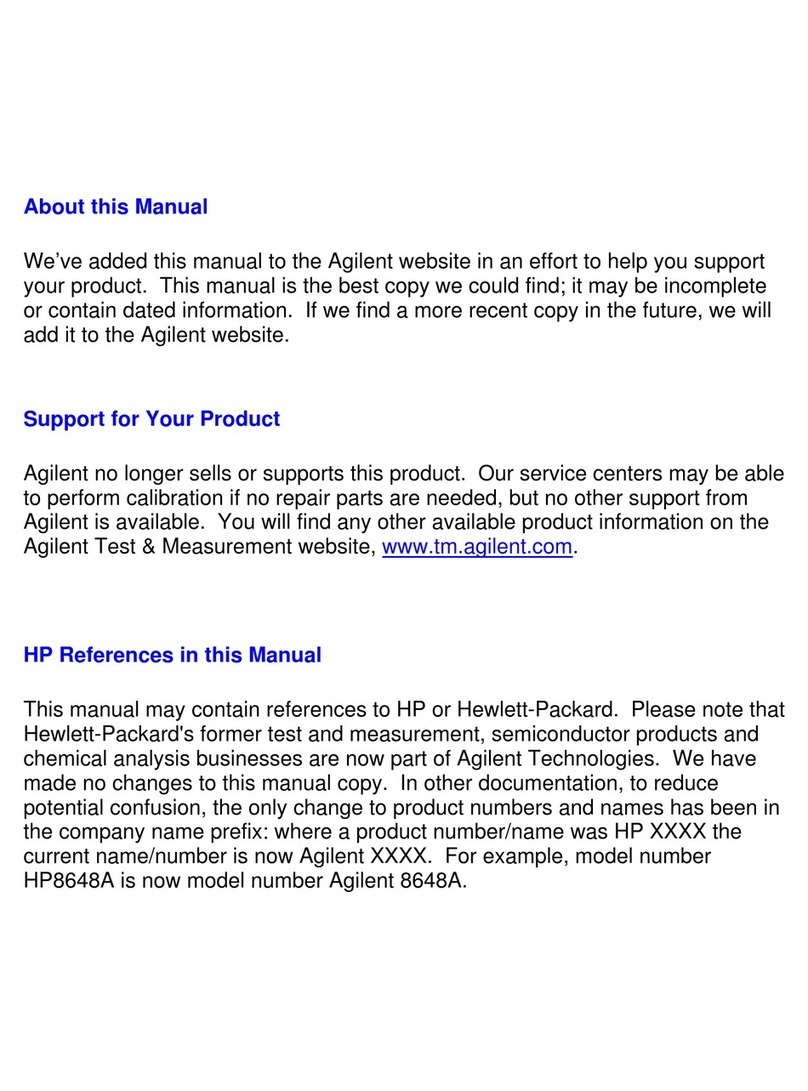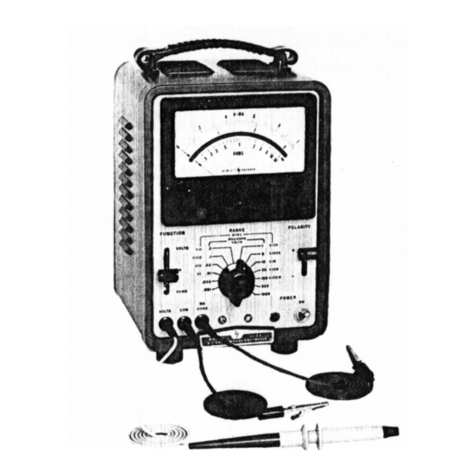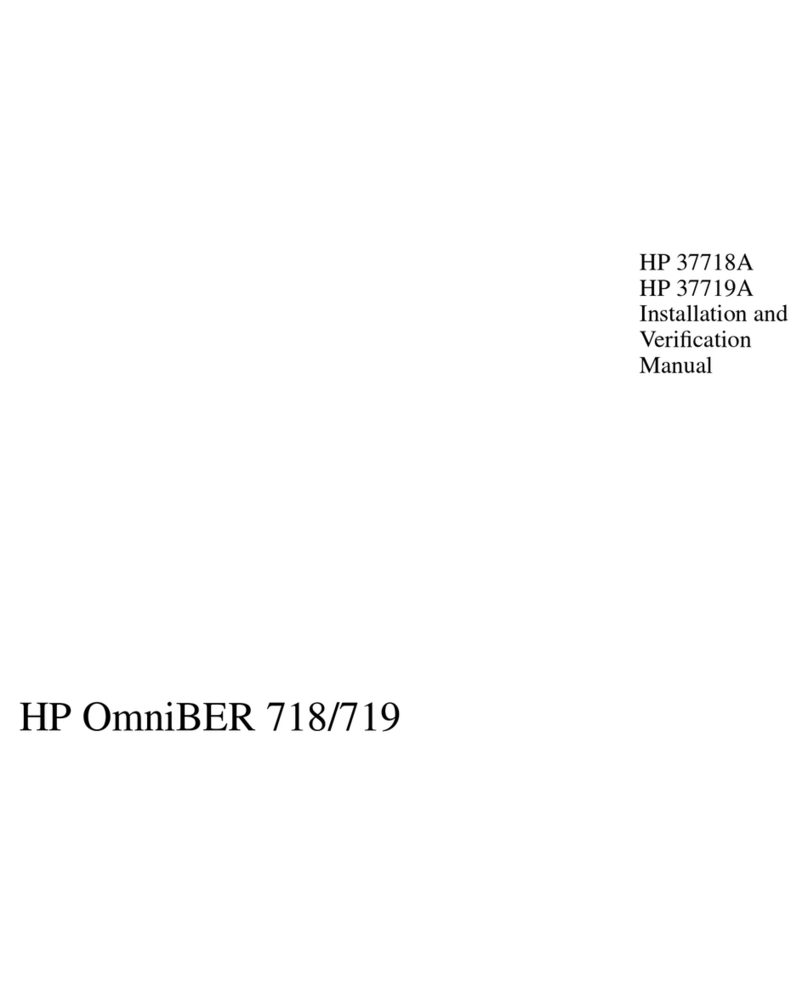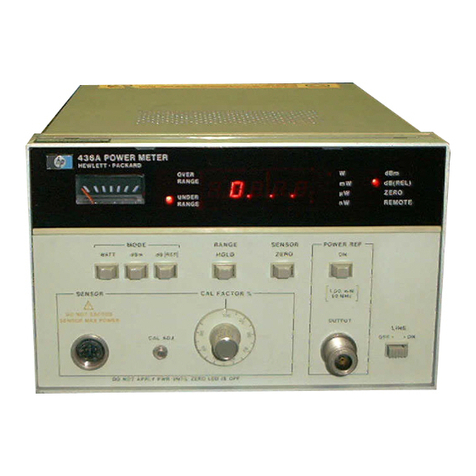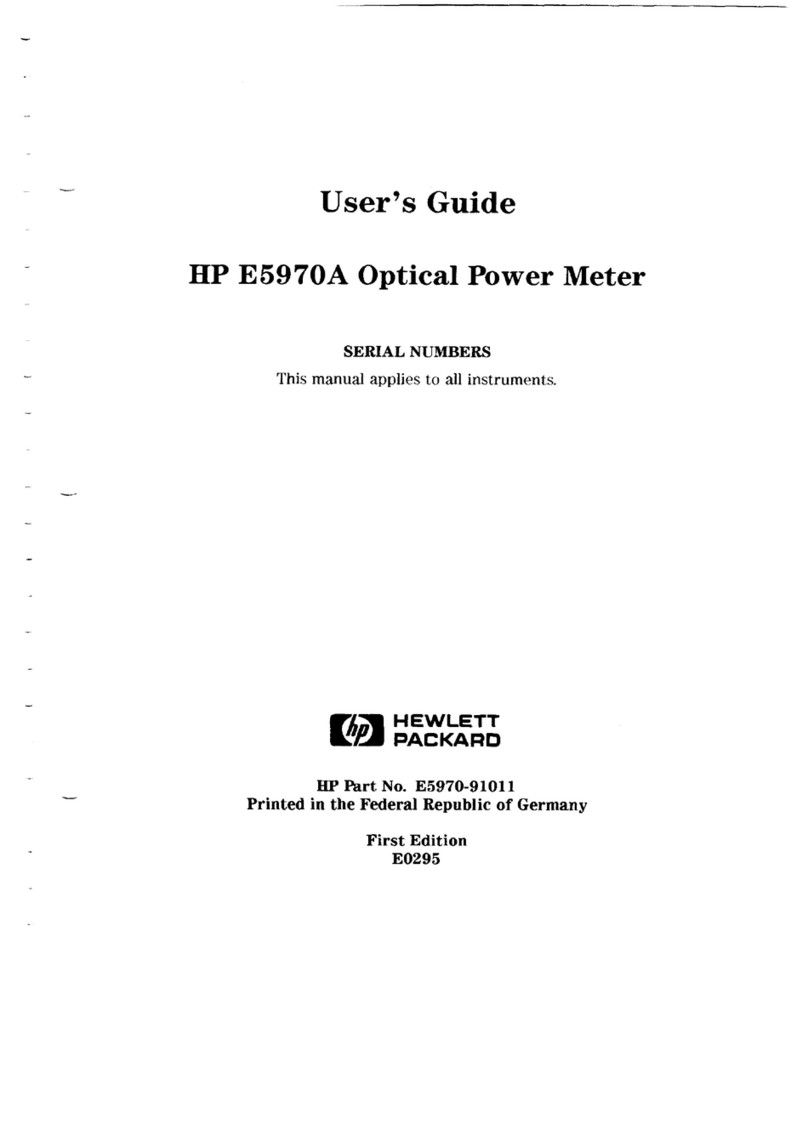
Model 339A Section I
SECTION I
GENERAL INFORMATION
1-1. INTRODUCTION.
1-2, This Operating and Service Manual contains
information necessary to install, operate, test, adjust, and
service the Hewlett-Packard Model 339A Distortion
Measurement Set.
1-3 This section of the manual contains the performance
specifications and general operating characteristics of the
Model 339A. Also listed are available options and
accessories, and instrument and manual identification
information.
1-4. SPECiFiCATiONS.
1-5. Operating Specifications for the Model 339A are
listed in Table 1-1. These specifications are the
performance standards or limits against which the
instrument is tested. Table 1-2 lists general operating
characteristics of the instrument. These characteristics
are not specifications but are typical operating
characteristics included as additional information for the
user.
1-6. INSTRUMENT AND MANUAL IDENTIFI-
CATION.
1-7. Instrument identification by serial number is
located on the rear panel. Hewlett-Packard uses atwo-
section serial number consisting of afour-digit prefix and
afive-digit suffix separated by aletter designating the
country in which the instrument was manufactured. (A=
U.S.A.; G=West Germany; J=Japan; U=United
Kingdom.) The prefix is the same for all identical
instruments and changes only when amajor instrument
change is made. The suffix, however, is assigned
sequentially and is unique to each instrument.
1-8. This manual applies to instruments with serial
numbers indicated on the title page. If changes have been
made in the instrument since the manual was printed, a
yellow “Manual Changes” supplement supplied with the
manual will define these changes and explain how to
adapt the manual to the newer instruments. In addition,
backdating information contained in Section VII adapts
the manual to instruments with serial numbers lower
than those listed on the title page.
1-9. Part numbers for the manual and the microfiche
copy of the manual are also listed on the title page.
1-10. DESCRIPTION.
1-11. The Model 339A Distortion Measurement Set
combines alow distortion signal source, a high resolu-
tion distortion analyzer, an rms responding voltmeter
and aVU (volume units) meter in one unit.
1-12. The signal source used in the Model 339A is a
“bridged-T” oscillator which provides alow distortion
sine-wave signal from 10 Hz to 110 kHz. The output
amplitude is variable from 1mV rms to 3Vrms into a
600 ohm load and is maintained by an amplitude control
circuit which minimizes amplitude variations even when
fraonanr*\7 ranOM
CiUUlgmE, ll^uwiiv; *»***£,«-*,.
1-13. The distortion analyzer section of the 339A
contains atracking notch filter which is tuned to the
oscillator frequency. The analyzer measures total
harmonic distortion (THD) from 100% full-scale to .01%
full-scale in nine ranges and features both automatic “Set
Level” and automatic “Nulling” to greatly simplify
operation. The Auto Set Level feature automatically sets
the reference level over a10 dB range. If the input signal is
outside this range, aLED on the front panel indicates
whether the INPUT RANGE control setting must be
increased or decreased to be within the “pull-in” range of
the Auto Set Level. The Auto Nulling feature is fully
automatic when the 339Ainternal oscillator is used as the
signal source. When an external oscillator is used as the
signal source, an LED on the front panel indicates which
direction the FREQUENCY controls must be set to be
within the Auto Nulling range. Distortion characteristics
of the input signal can be monitored at the MONITOR
OUTPUT terminals with external equipment (oscillo-
scope, voltmeter, spectrum analyzer, etc.) to provide
additional analysis of the distortion products.
1-14. The Model 339 Ais equippped with an amplitude
modulation (AM) detector which has afrequency
response from 550 kHz to 1.6 MHz. The AM detector
permits the measurement of modulation distortion.
1-15. The 339A contains three active filters, one high-
pass and two low-pass, which enables the user to
eliminate unwanted frequencies and noise to permit
higher resolution measurements.
1-16. The ac voltmeter section of the 339A measures the
rms value of input voltage from 1mV full-scale to 300 V
full-scale in twelve ranges. In the VU meter mode, the
1-1
